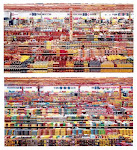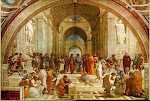Key words: immigration,
The issue of immigration in Argentina Argentina  building our nation. However, it is possible to think that if the waves of immigration of the first half of the 20th century were so successful and left such a positive impression in our social imaginary, this was because the Argentine State and the ruling elites were already strong enough and well-prepared to handle the tension and risks that any important immigration movement implies. But that hadn’t always been the case.
building our nation. However, it is possible to think that if the waves of immigration of the first half of the 20th century were so successful and left such a positive impression in our social imaginary, this was because the Argentine State and the ruling elites were already strong enough and well-prepared to handle the tension and risks that any important immigration movement implies. But that hadn’t always been the case.
 building our nation. However, it is possible to think that if the waves of immigration of the first half of the 20th century were so successful and left such a positive impression in our social imaginary, this was because the Argentine State and the ruling elites were already strong enough and well-prepared to handle the tension and risks that any important immigration movement implies. But that hadn’t always been the case.
building our nation. However, it is possible to think that if the waves of immigration of the first half of the 20th century were so successful and left such a positive impression in our social imaginary, this was because the Argentine State and the ruling elites were already strong enough and well-prepared to handle the tension and risks that any important immigration movement implies. But that hadn’t always been the case.The problem of immigration (at least from the point of view of the ruling classes) is always the risk of social, cultural or political instability. This was made evident in Argentina La Prensa in which the Italian community was called to celebrate the (quite recent) Unification of Italy:
“Being far from your Motherland, you must keep the festivity uncorrupted, celebrate the glory and cultivate the love to deserve being called her children. So be willing to answer to these sacred duties celebrating September 20th.”
 Bertoni’s thesis is that national celebrations together with an emphasis on national history and on patriotic feeling were consciously introduced in schools by this time as an ideological instrument to control and lessen the potentially harmful impact of foreign nationalism [2]. In this sense she quotes an 1887 regulation by the CNE (Nacional Council of Education) which establishes national celebrations at schools:
Bertoni’s thesis is that national celebrations together with an emphasis on national history and on patriotic feeling were consciously introduced in schools by this time as an ideological instrument to control and lessen the potentially harmful impact of foreign nationalism [2]. In this sense she quotes an 1887 regulation by the CNE (Nacional Council of Education) which establishes national celebrations at schools:“The well-intended interests of the whole country require promoting a patriotic feeling, which gives cohesion to the constitutive elements of our nationality.”
 An article appearing in
An article appearing in After decades of strengthening and consolidating a system of cultural homogenization (and after decades of persecution and expulsion of deestabilising foreign groups), it seems easier to explain the effective integration of the immigration waves of the post-war periods and the positive feeling left in our national imaginary. But this should help us bare in mind that the natural reaction towards immigration tends to be tension and not straightforward acceptance. And this is telling a lot about ourselves (or about any cultural identity in the end), about our conception of the self and of the foreign, and about the limits we consciously or unconsciously draw between communion with the Other and maintenance of our cultural individuality.
[1] All the quotations in this post are taken from Bertoni’s paper: Bertoni, Lilia (1992) “Construir la nacionalidad: héroes, estatuas y fiestas patrias, 1887-1891.” Boletín del Instituto de Historia Argentina y Americana Dr. E. Ravigniani, Tercera Serie, Nº5. Buenos Aires: Instituto de Historia Argentina y Americana Dr. E. Ravignani.
[2] Bertoni's proposition is coherent with Tedesco's thesis that education in Argentina was meant to primarily fulfil the political function of integrating different cultures within the values of the hegemonic groups rather than to be functional to the economic policies of the Argentine State. This would explain the choice of an encyclopedist rather than pragmatic education in the early Argentine education system. [Tedesco, Juan Carlos (1993) Educación y Sociedad en la Argentina : 1880-1945. Buenos Aires: Ediciones Solar. (The chapter dealing with the political function of education can be downloaded here)]
















.gif)





